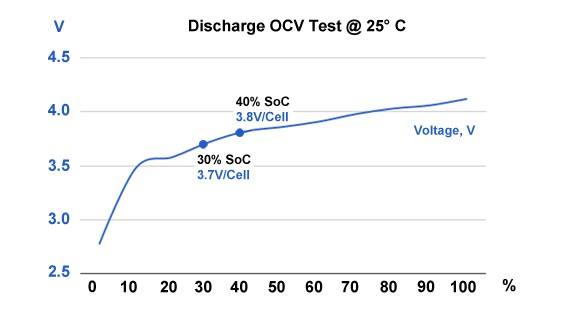What happens if a flashlight without LVP, using an unprotected battery, is left on by mistake when put in a cupboard?
It’ll drain the battery until the battery voltage is lower than LED forward voltage, then stop. By that time the battery is most likely deep-discharged. Chargers will detect that and usually refuse to charge.
If a charger still tries to charge it, it’s an increased fire hazard due to changes happening inside the cell at deep discharge.
It could drain the battery to the point where it cannot be re-used. If it’s discharged far enough it’ll be permanently damaged and could catch fire if you try to charge it.
If you have a DMM you can measure the voltage and see how low it’s gone, if not recycle it. Do not try to charge it.
The “do not recharge” voltage of liion cells is 1.0V according to published literature from both Samsung and Sony.
So, that’s a bit over 3V? when the LED stops draining the battery? And then the driver parasitic drain will eat up what’s left?
If you hook a typical 3V LED up to an adjustable power supply, the die will start to glow at around 2.4V to 2.5V. The micro-controller(s) on the driver may typically be rated for 2.5V min, or 1.8V min, so at a certain point the LEDs and micro-controllers should be off, and then what you’re left with is the passive components and however much bleeds through them, which should hopefully be negligible. So you’re unlikely to find your light with a <1.0V cell if you had left it on. It could very well be >2.0V.
Which is functionally ‘empty’ and probably already damaged anyway?

Do you have a digital multi meter to measure the voltage with? It’s the only way you’re going to find out, anything else is guesswork.
<2.5V is “over-discharged” but not damaged.
Regarding that chart, as I said in another post, the liion cells we use are more linear than that.
Would that mean that if I chance on a 1V<Cell<2.5V, it is still, at least theoretically, rechargeable and could be salvaged (somewhat)?
Yes, although you can employ discretion as you see fit.
If I come across a battery pack and it’s made of high quality cells which are over-discharged but >1.0V per cell, I’d revive them.
From others you are likely to hear something along the lines of: “if a cell is <2.5V it is dangerous and needs to be thrown out.” I’ve responded to this claim with some technical resources in this post.
People’s perceptions are shaped by the information they have seen.
I always measure voltage before and after charge to make sure it’s in safe range. I have encountered a defective charger which charged one cell to 4.4v. It was an immediate throwaway in a fireproof container.
For me anything lower than 2.5v is done. The effort to save $5 is not worth burning my house down.
I have pulls from old laptops that were below 2v. Some even lower.
Many recovered with careful monitoring for overheating. I use a hobby charger connected to a PC for the initial test.
Most lost 10%-15% of their mAh rating. But are working fine in low power applications.
I run a capacity test every few charges to make sure they haven’t degraded dramatically.
A battery in a light w/o LVP will recover IF not left to drain after the LED dims.
Protected cells are the best bet for safety.
All the Best,
Jeff
Just to add on to that with my own personal example.
I came across an old but never used laptop battery pack and found some authentic Panasonic CGR 18650’s inside that tested at ~0.8V when I first took them out of the pack. I put them aside. A couple days later I tested them again and voltage had risen to ~1.1V. The pack’s BMS had been a tiny tiny load and when the cells were removed that load was disconnected and voltage rebounded very very slightly.
Being >1V now I decided to try charging and capacity testing them. While charging they behaved exactly like I would’ve expected those cells to behave if they were new and they capacity tested to nearly their full rated capacity. I let them sit around a few weeks and there was no significant self discharge. They appeared to be in perfect condition. Nobody would have been able to tell they had ever been deeply discharged.
But I decided to dispose of them anyways. My main reasons for doing so being:
-they had likely been deeply discharged for a long time. Sitting <2.5V for easily over a year maybe more
-I already had too many 18650s
-they weren’t high discharge cells anyways
But if they had been Samsung 25r’s or if I wasn’t trying to get rid of my extra 18650’s already I probably would’ve kept them.
Yeah, but charge those very slowly (10-100 mA for 18650s) until they reach 3-3.5V, only the charge at usual 1-2A.
Charge them in a secure location.
Do not fully trust them again after that. It usually works, I did it before and used those cells for years. But most 18650s are worth 2-3$, not worth the risk IMO.
Could always give it to someone you hate…